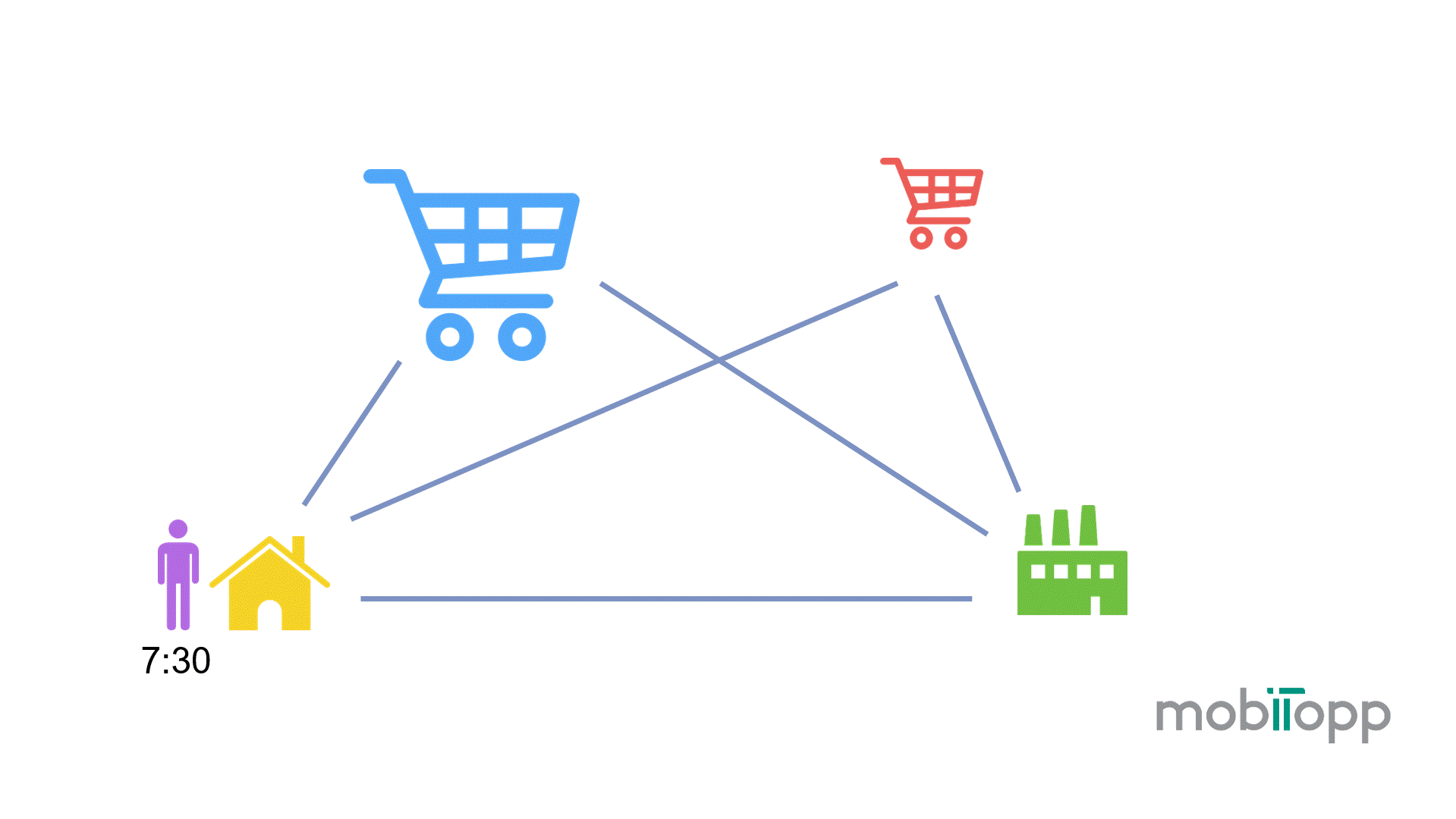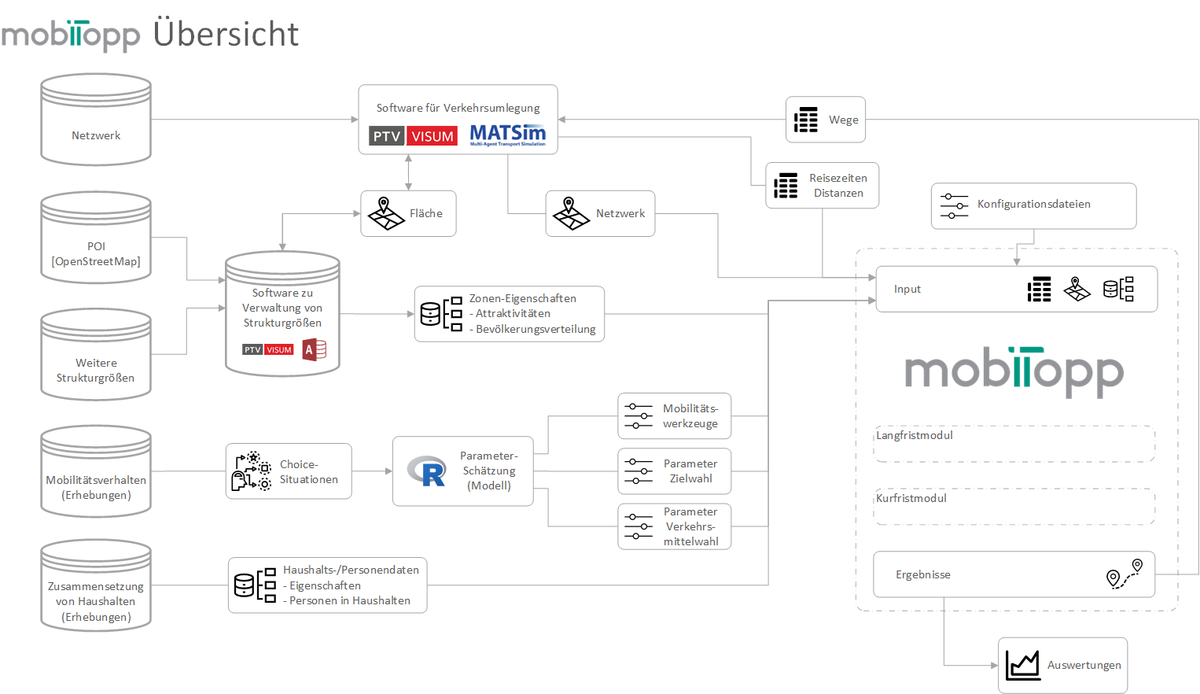Methodological background
All persons in the planning area are represented in the model as individual agents. The model result represents all trips made by the agents in the study area. The agents are assigned attributes that correspond to the characteristics of the population, e.g. age, occupation and public transport season ticket ownership. Each agent has an activity program that is carried out in the course of the simulation and in the course of which destination and transport mode decisions have to be made. Modern methods of decision modeling (discrete choice models) are used here. Examples of concrete applications can be found under features and model regions.
The data basis of the model is formed by mobility surveys such as the German Mobility Panel (MOP) or Mobility in Germany (MiD). These are combined with spatial-structural data, population data and data on transport services.
Characteristics
| Discrete choice models The behavior observed in surveys is integrated into the overall model using choice models. A variety of different model types can be used: Multinomial, Nested, Cross Nested or Mixed Logit. |
Modeling of households The person agents "know" their household context. Their mobility behavior varies depending on the situation they find themselves in (with/without children, household size, public transport season ticket ownership, etc.). |
| Simulation period of one week The modeling of one week enables stability and variability in destination and choice of means of transport. Multi- and monomodal behavior becomes recognizable in the simulation. |
Modeling of mobility tools Bicycle and car ownership, public transport season ticket, registration with sharing providers and other mobility service providers - all these decisions have an influence on mobility and can be modeled realistically. |
|
Multi-stage population synthesis |
Modeling of three stages of travel demand modeling |
Process flow

1. Long-Term Module
In the long-term module, a synthetic population is generated that represents the people in the planning area. For this purpose, population statistics of the planning area and real existing households are merged using an Iterative Proportional Updating algorithm. People receive activity plans that are generated on the basis of mobility surveys. In addition, they are assigned mobility tools such as car ownership, public transport season ticket ownership and memberships with car-sharing, bike-sharing and other providers based on the available mobility options and sociodemographics in the area of study. Finally, people are assigned fixed destinations such as jobs and places of education based on commuting statistics.
2. Short-Term Module
In the short-term module, the mobility behavior of the population is simulated chronologically according to the activity plans. People carry out their activities simultaneously at the planned times and move from their place of residence to the location of the activity. The flexible destinations to be visited (such as shopping and leisure facilities) and the means of transport used are selected at individual level depending on the situation. The transport options available at the time (e.g. the availability of the household's car, bike-sharing bicycles or ridepooling vehicles) are taken into account. Discrete choice models such as nested and mixed logit are used for the decisions, whereby interpersonal heterogeneity is taken into account.
Principle of the processes in the short-term module:

Technical background
Programming language
mobiTopp is based on the established Java programming language.
Parallelization
The first parts of mobiTopp have already been parallelized. Others are being added in current projects.
Compatibility
There are interfaces to PTV Visum, MATSim and FleetPy, and there are supplementary tools in Python and R.
Open Source
mobiTopp is published on Github: github.com/kit-ifv/mobitopp
Database structure
The diverse input data is processed and stored in a database system (see figure).
Most important scientific publications


